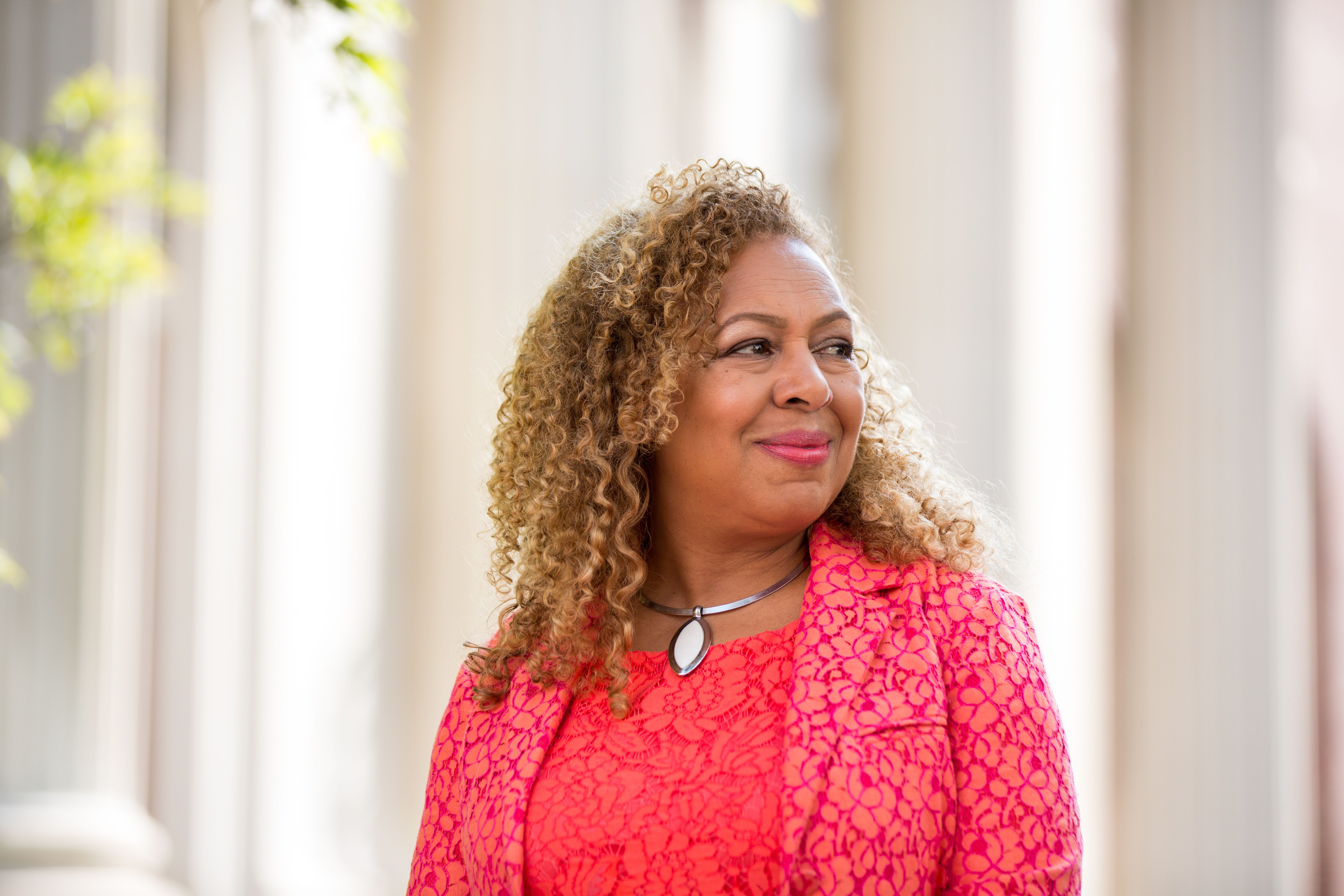

Art historian and curator Kellie Jones ’81 was named a 2016 MacArthur Fellow by the MacArthur Foundation on Wednesday, Sept. 21. Along with the 22 other fellows, Jones received the foundation’s “genius” grant, a $625,000 stipend paid over five years.
Jones is currently an associate professor of art history and archaeology at Columbia University and a fellow at the school’s Institute for Research in African-American Studies. She has curated exhibitions focused on the art of African American and Latin American artists and of the African diaspora. She also wrote “EyeMinded: Living and Writing Contemporary Art,” a book about her curatorial experiences.
Jones graduated from Amherst with an interdisciplinary major, which she described as a combination of black studies, art history and Spanish, and wrote a thesis comparing African American and Latin American artists.
“I really made up what I was doing,” Jones said in an interview. “What was so fantastic about Amherst … was that I had the freedom to do that, the freedom to come up with an area of study and go into it.” At the time, Jones said, the study of art of the African diaspora, African Americans and Latin Americans was not as accessible to students as it is today.
Jones said that her academic interests were influenced by her upbringing in New York City surrounded by art and artists. Though she said she did not want to be an artist herself, she was interested in curating art, especially writing about art and bringing the work of underrepresented artists to greater prominence.
“Being in an urban high school was very diverse,” Jones said. “But when I was reading art history books, I didn’t see any of the people that I knew as artists growing up — I was lucky enough to have had that experience — in the books, or people like them. And I thought, ‘This is wrong. How can I see all these people in the world, yet they’re not in the books?’”
During her undergraduate studies, she designed an independent study course to interview artists she knew in New York, she said, “as a way to find out information about these artists that [she] wasn’t readily finding.”
Jones started her career as a curator at the Studio Museum in Harlem and the Jamaica Center for Arts and Learning. Community arts and ethnically specific organizations were important, she said, because they made different forms of art accessible and “because these highlight the histories that are so important for our country.”
After receiving her graduate degree from Yale University, Jones planned to return to “the museum world,” but she received the opportunity to teach at Yale and later at Columbia. She said she accepted these offers because of her love for writing and exploring ideas.
“Teaching art in New York is a dream,” Jones said, adding that she found her work exciting because she was among the earliest people to graduate with an undergraduate degree focusing on African American studies.
Jones described her exhibitions as extremely popular, demonstrating demand from Americans and worldwide audiences to experience a diversity of American art.
“It’s not just African Americans, and it’s not just black people,” Jones said. “Everyone wants to know about this history … They’re not just for the sake of African Americans — although that’s important — it’s about changing how we view the world, and that’s what I’ve always wanted to do.”
Some of Jones’ exhibits examined the the interaction of art and artists with social justice movements, such as “Witness: Art and Civil Rights in the Sixties” in 2014. The civil rights movement reached the public mainly through photos and television, and Jones said that many who viewed her exhibits were surprised to see how artists interacted with the changes sweeping through America at the time.
One of Jones’ most celebrated exhibits, “Now Dig This!: Art and Black Los Angeles, 1960-1980,” opened in 2011 as part of the Getty Research Institute’s “Pacific Standard Time” project to highlight artists outside of New York City, which tends to be the focus of the study of American art.
“What I loved about the project was that it focused on African Americans, but it was also a diverse show for white artists and Asian artists and Latino artists in that show,” Jones said. “These were all people who were part of Los Angeles and were affected by African American artists and culture and collaborated with them. I wanted to make that point.”
Collaboration will be one of the ways in which Jones plans to spend her MacArthur grant, which she said will enable her to take more risks with her own work. “I’m still shocked, honored, excited and elated,” Jones said, adding that she was excited to see that art remains on the list of fields of study supported by the grant.